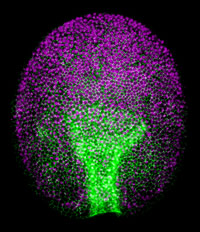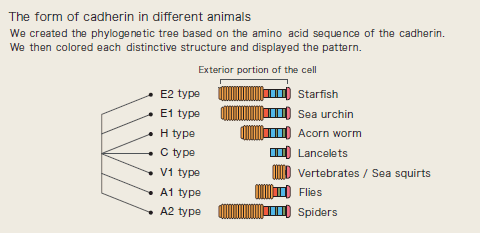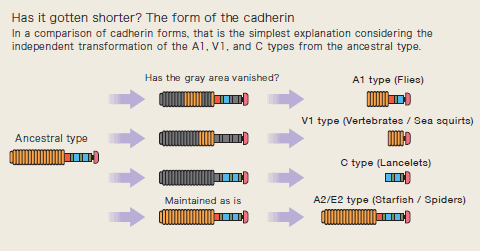The form of adhesion molecules is very strictly determined, because these molecules must accurately recognize each other. We have identified and compared the form of the base sequence of cadherin, the adhesion molecule of the adherence junction.
The diversity of cadherin forms was greater than we had foreseen. There are extreme differences in the external areas of cells where cells adhere to each other. How did this diversity arise? The molecules of the phylogenetic tree of spiders, which are arthropods, and starfish, which are echinoderms, are identical in form despite being systemically separate. In other words, it is extremely likely that even after the arthropods and the echinoderms diverged in the past, these molecules maintained their identical form. A comparison of the cadherins in organisms of several different systems shows there has been a short divergence of this form from the ancestral form. Moreover, we can only conclude that these changes have occurred independently. Evolution’s course has become visible in the diversity of cadherin forms.
Focusing on the form of the cadherin, which seldom changes despite its diversity, enabled us to see the changes that occurred in the distant past. These cannot be determined in the conventional manner from the phylogenetic tree of the molecules. Focusing the observation on the molecule as a whole without relying on changes in the base sequence, which often occur, is an effective method for the study of evolution. |
 |
Starfish gastrula
The purple specks are the nucleuses within an individual cell, and the green areas are the cadherin molecules.
The form of cadherin in different animals
We created the phylogenetic tree based on the amino acid sequence of the cadherin. We then colored each distinctive structure and displayed the pattern.
|
|


